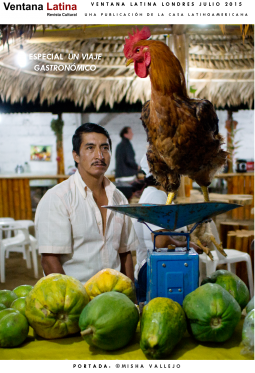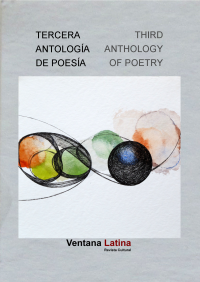‘Embrace of the Serpent’: Reflections on race and cultural colonialism in the Americas

By Jessica Fernández de Lara Harada
Ciro Guerra’s film ‘Embrace of the Serpent’ was released in the UK in June. Cannes winner, and Oscars nominee, this atmospheric, fine-grained, black and white film narrates the encounter of Karamakate, a ‘Native’ shaman and ‘the last of his Amazonian tribe’, with Theo, a German ethnologist, and Evans, a botanist from the US. Theo and Evans navigate the Amazon river in separate time periods, between 1909 and 1940, albeit with converging aims: to obtain raw material. Through rough transitions drifting back and forth in time, ‘Embrace’ complicates temporality and confronts a clash of ideas, uneven power and ways of being.
This film highlights a key neglected issue. At least since the 1960s international human rights law and institutions are commended for having established a prohibition on racism as a state ideology and on the practice of all forms of racial discrimination, which has allegedly contributed to ending racist and colonial regimes around the world. However, colonialism endures through cultural systems of reference which affect how people conceive of themselves and the world around them. Guerra’s film hints at this. Karamakate appears as guiding the journey, but in fact the film is based on journals written by Theo and Evans. This dissonance between those who inhabit narratives (act life) and those who ‘tell’ them (and hence enact the former’s condition) reverberate in the Americas today as an ignored colonial legacy.
A portrait of young Karamakate, taken by Theo in 1909, is given to the older Karamakate by Evans in 1940. Theo wrote his journal, photographed and collected artefacts from ‘indigenous’ peoples and believed this meant no harm. However, fixing ‘native’ peoples into images, unilateral narratives and depictions and as items of the past takes the life out of them. This white production of knowledge, or rather this incomplete archive of ideologically loaded values, sentiments and practices for dealing with the (not so easily understood) ‘natives’, removes the latter of their humanity, volition and agency… to the extent that what this film reflects is a widely shared belief that the vast majority of native people are homogeneous minorities in danger of extinction and that the still alive ones are those very few living in remote areas, wearing loincloth, and speaking only (or mainly) indigenous languages.
Most ‘indigenous’ peoples have been forced to adopt Spanish names and language (with the cultural burden this involves, including the dislocation of their identities and instability), Catholicism and prevailing ways of dressing, acting and thinking. They are still compelled to do this either by direct coercion, or by following a strategy of conformity, that is, becoming like the coloniser, which entails reasserting dominant narratives as a form of resisting their oppression. Non-fictional Amazon Native Nilbio Torres (who plays Karamakate) makes evident that indigenous peoples do not live in a monolithic, binary world; they can transit from ‘indigenous’ life to ‘modernity’ and learn the languages of both. This transition does not imply de-indianisation for it does not necessarily alter how they are identified by others – hence the relevance of race as an analytical tool to examine these historical processes.
A personal trait that is not as easily changeable by colonialism and its aftermath (racial oppression) is one’s body and physical appearance. Turning the gaze to indigenous people, who have been inconsistently assimilated to the national body, the film portrays the violence that exists within and among them. When ‘Colombians’ assault local indigenous communities, we see that the indigeneity of their bodies appears to be subsiding into the Western model, and with this their identity becomes somehow anonymous. Guerra’s film warns us that national and local elites endowed with power replacing the one symbolically held by white colonisers can benefit from reasserting the latter’s material control and domination through the (re)enactment of colonial structures, hierarchies and classifications.
This has led to a statistical ethnocide, as Professor Alan Knight pointed out, whereby the number of indigenous peoples are systematically underestimated. This results in part from assimilation policies fostered by the state, and the mestizo ideology. Mestizaje recognises as ‘nationals’ those with (more) European, (less) Indigenous and (even less) African descent. Despite their significance, Asian, Middle Eastern and internal migrants (Indigenous and otherwise) are excluded, as examined by Professor David FitzGerald. Thus, mestizo has become akin to a ‘pure’ racial category that implies racial discrimination, expressed in white privilege and contempt for darker shades of colour that gravitate toward associations with indigeneity and blackness.
Guerra’s film, even if it fails to challenge narratives of native people’s discontinuity by bringing them to the fore on the screen, opens spaces to subvert the ways in which they have been (re)produced by cultural forms as literature, media and social imaginary. Recovering the dignity of indigenous peoples raises hopes that those who identify or are identified as natives, indigenous mestizos or any such category, can be recognised and appreciated for the breathing, vital, malleable beings they are, either performing ‘indigeneity’ or modernity.
* Jessica Fernandez de Lara Harada is a Gates Cambridge Scholar Elect who will be doing a PhD in Latin American Studies from this autumn.








 Copyright © 2024 Company no. 6720498 10 Kingsgate Place, London NW6 4TA, United Kingdom Tel: 020 7372 8653
Copyright © 2024 Company no. 6720498 10 Kingsgate Place, London NW6 4TA, United Kingdom Tel: 020 7372 8653